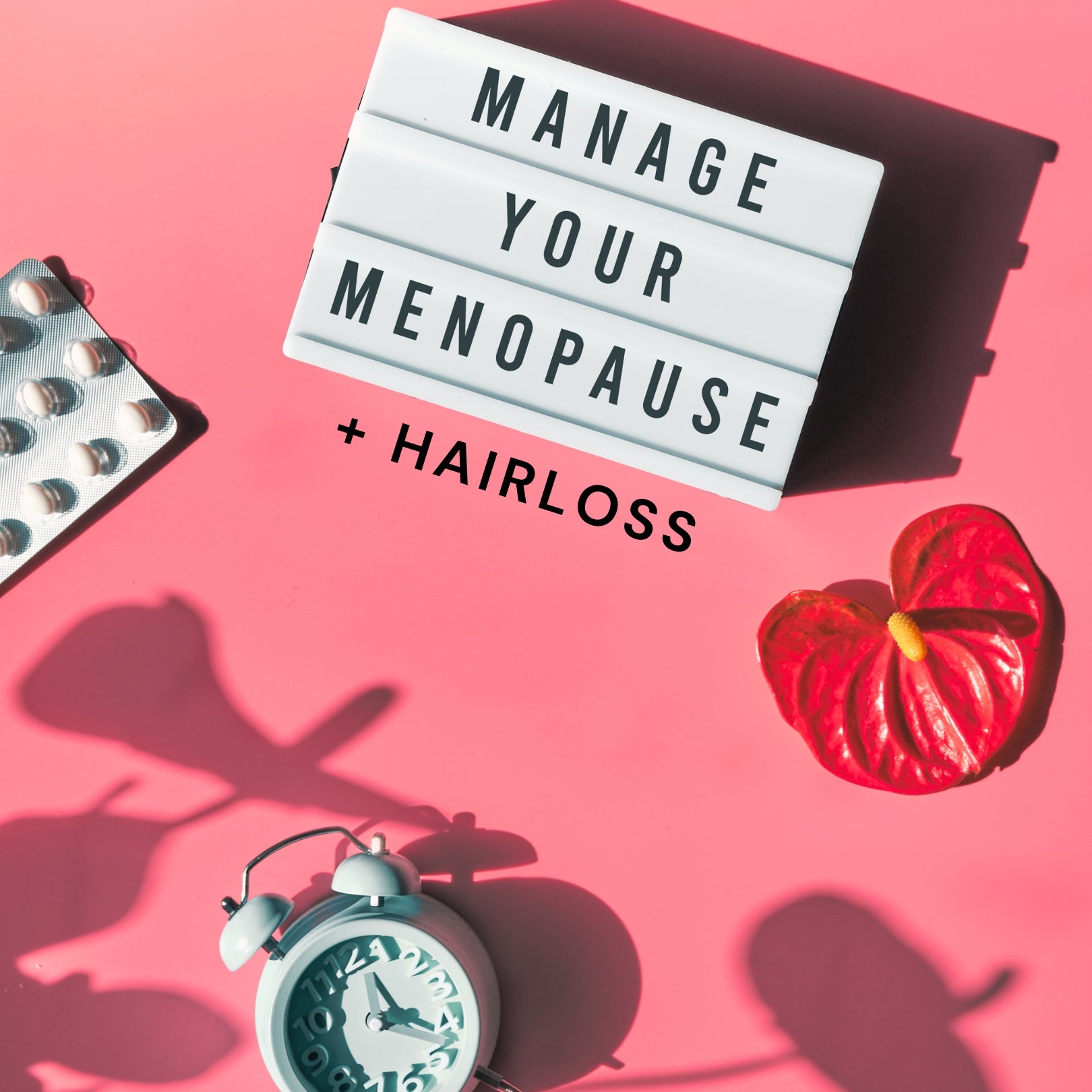Is topical minoxidil the best hair loss treatment for women?
Although there is no cure for hair loss, some treatments can slow or reduce hair loss, stimulate regrowth and replace damaged hair.
In this article, we take a look at pharmaceutical and non-pharmaceutical options for managing hair loss for women such as:
- Minoxidil,
- Micro-needling,
- Finasteride,
- Spironolactone,
- Hair transplant, and
- Red light therapy, also known as low level light/laser therapy.
Hair loss treatment for women
Minoxidil
Minoxidil was first TGA approved for the management of hair loss during the 1980s for men and women. Minoxidil is available in strengths of 2% and 5%; with the 2% marketed for women. Studies show results from minoxidil 5% is superior to 2% for both men and women, with no increase risk of side effects.
There are many brands of minoxidil available in Australia and minoxidil is available without a prescription.
The advantages of using minoxidil are:
- It's efficacy and side effects have been widely established.
- Minoxidil can be used long term.
- Minoxidil is more cost effective when compared to other non-pharmaceutical options.
The disadvantages of using minoxidil are:
- Not everyone will respond to minoxidil and for those who do respond to minoxidil, optimal results are not seen for at least 12 months.
- Minoxidil requires a large amount of alcohol and propylene glycol to dissolve. These two ingredients can cause skin sensitivity, irritation and dermatitis-like reactions for some people. Minoxidil foam is recommended for people who are allergic to propylene glycol. Minoxidil Plus+ is recommended for people who have skin issues from using alcohol and propylene glycol based products.
- Minoxidil should not be used in women who are pregnant or breastfeeding.
If you have more questions relating to the side effects of minoxidil, don't worry, we got you.
Finasteride
Finasteride is the active ingredient in Propecia and requires a prescription. Finasteride works by stopping the enzyme 5-alpha-reductase from converting testosterone to dihydrotestosterone (DHT) in both men and women.
Having too much DHT in the scalp causes the hair follicles to shrink and produces weaker hair over time.
Finasteride has been shown to prevent further hair loss in over 95 per cent of men. There is not enough evidence to support the use of topical finasteride in women. Early trials suggest topical finasteride is effective, however, there is no standardised dosing for women and more data is needed.
Pros for topical finasteride ...
- Highly effective
Cons for topical finasteride ...
- Not enough data for women.
- Can't be used by pregnant women and should be avoided in men trying to start a family.
Spironolactone
Spironolactone was first prescribed for the treatment of hypertension and fluid retention. Scientists later found spironolactone can also stop DHT from binding to its receptors, so it works a little differently to Finasteride but the end result is the same (but weaker compared to finasteride).
The anti-androgen effects of spironolactone makes it a popular choice for managing adult hormonal acne, reducing excess unwanted facial and body hair, as well as hair loss.
Pros for spironolactone ...
- There is more data available for the use of spironolactone in women compared to finasteride.
- The oral form of spironolactone has shown to be more effective than topical spironolactone for managing acne and hair loss for women. Topical spironolactone is a consideration for people who get side effects from oral spironolactone.
Cons for spironolactone ...
- Pregnant or breastfeeding women should not use spironolactone.
- The benefits from spironolactone can take 3-6 months to show.
Hair Transplant
Hair transplantation is a surgical procedure for the treatment of hair loss.
Hair transplant procedures are more expensive but they give almost instant results. We find that people who have had hair transplant surgery still require topical therapy after their procedure to prolong the results of their hair transplant.

Red light therapy
Low level laser/light therapy (LLLT) have shown to increase terminal hair count and hair strength in both men and women when used consistently for 15-30mins on alternating days for at least six months. The sweet spot is 650-655nm wavelength and there are several FDA approved devices. Duration and frequency of use depends on the device and the also the number of diodes present within the device. The larger number of diodes, the more expensive the device.
LLLT can be combined with topical treatments including minoxidil and solutions containing peptides.
Micro-needling for hair loss
Micro-needling and red light therapy are both suitable options for menopausal hair loss.
Several studies have shown that the benefits of minoxidil are enhanced by almost 45% when combined with micro-needling in both men and women. When used on its own, micro-needling can increase hair counts by up to 15%. This makes micro-needling a very attractive alternative for hair growth.
Micro-needling works by:
- Stimulation of growth factors to the area,
- The growth factors (GF) promote the formation of new blood vessels over time, and
- The growth factors and new blood vessels carry oxygen and nutrients to encourage follicle growth.
The devices used for micro-needling can be either a derma roller, micro-needling stamp or automated stamping devices with needle lengths ranging from 0.25mm to 2.5mm. If you are going to do micro-needing at home, we recommend to use needle lengths no longer than 0.5mm. Leave the longer needle size for in-clinic use.
Keeping the scalp clean and sanitising the devices properly with 70% isopropyl alcohol before and after micro-needling is also paramount to reduce risk of infection.
References:
- Australian Medicines Handbook 2021
- "Pattered Hair Loss." Better Health Victoria. Accessed 26th January 2022 URL: https://www.betterhealth.vic.gov.au/health/conditionsandtreatments/patterned-hair-loss
- "Hair Loss." Harvard Health Publishing. Accessed 26th January 2022 URL: https://www.health.harvard.edu/a_to_z/hair-loss-a-to-z
- Lingling, J et al (2022). Effects of microneedling and 5% topical Minoxidil solution combination therapy in androgenic alopecia. Journal of Cosmetic Dermatology. July 21, 2022. Accessed October 16, 2023.
- Udare, S et al (2023). "Low-Alcohol or Alcohol-Free Minoxidil Formulation for the Management of Androgenic Alopecia: an Indian Perspective." International Journal of Trichology. 15(1): p13-17, Jan-Feb 2023.
- Olsen, E et al. (2002). "A randomized clinical trial of 5% topical minoxidil versus 2% topical minoxidil and placebo in the treatment of androgenetic alopecia in men." Journal of the American Academy of Dermatology, 47(3), 377 385.
- Roberts, J et al (2014). "Response to Topical Minoxidil in Female Androgenic Alopecia." Journal of Dermatologic Therapy. Jul-Aug;27(4):252-4
- Lueangarun, S et al. (2021). "A Systematic Review and Meta-analysis of Randomized Controlled Trials of United States Food and Drug Administration-Approved, Home-use, Low-Level Light/Laser Therapy Devices for Pattern Hair Loss: Device Design and Technology". J Clin Aesthet Dermatol. 2021;14(11):E64–E75.



